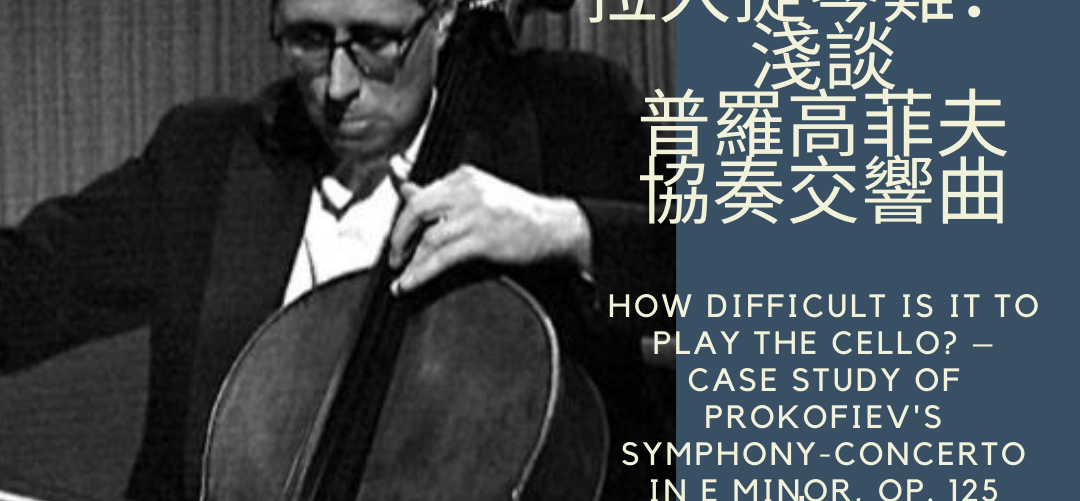How difficult is it to play the cello? –Prokofiev’s concerto symphonies
A series of previous articles have described the technical demands placed on the cello by different concertos. It is true that the more difficult the movement, the more demanding it is for the cellist, but the more it allows the musician to shine on stage. However, some pieces have also been described as too difficult and unplayable.
The most difficult of these is Prokofiev’s Concerto Symphony in E minor. This is the second cello concerto symphony written by Prokofiev, completed in 1952, a year before his death. At the same time, it was in fact based on the Cello Concerto in E minor, Op. 58, which had been substantially revised 20 years earlier. Ten years later, he heard Rostropovich, then still a student at the Moscow Conservatory of Music and later Russia’s most famous cello virtuoso, play it (Youtube: https://www.youtube.com/watch?v=v0rEa1TTGlU) and renewed his interest in the piece.
He sought advice from Rostropovich as he revised the composition, refining it in terms of the details of the performance instructions. The final work makes good use of the richness of the cello’s tone, which collides with the orchestra’s melody to produce a powerful, oddly tonal but appealing movement. Prokofiev dedicated this passionate work to Rostropovich, who at the time was not yet 30 years old, and showed the music world his true power by giving a perfectly passionate performance on stage.
So why, exactly, does everyone say this work is so difficult?
In his book, The People’s Artist: Prokofiev’s Soviet Years, which chronicles Prokofiev’s musical life, music historian Simon Morrison describes the work as “a thorough challenge to the cellist’s mental and physical stamina. –It requires the cellist to vary his technique intensively, to maintain the quality of the long phrases, to deal with the constant change of timbre, and to repeat two voices when playing solo, as if turning the monophonic instrument of the cello into a polyphonic instrument.)
Apart from the objective technique, it is not easy to grasp the emotion of playing this concerto symphony. Many classical texts have pointed out that the incongruity of this concerto symphony was in part a way a way for Prokofiev to vent his anger at life. Like other Soviet composers, he was subjected to official repression of so-called ‘formalism’ and his work was unreasonably attacked. In the second movement he puts a folk melody of the time into the movement, forming a beautiful phrase, but ends with a violent and rapid doublet, details that underline Prokofiev’s rebellion and ambition.
Reference:
Morrison (2010), The People’s Artist: Prokofiev’s Soviet Years, Oxford University Press, USA, pp.378-379
Photo Source: EUROARTS.com


 繁體中文
繁體中文